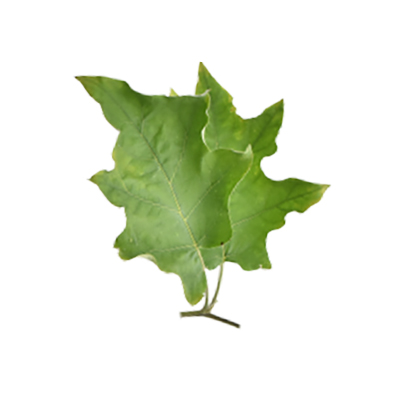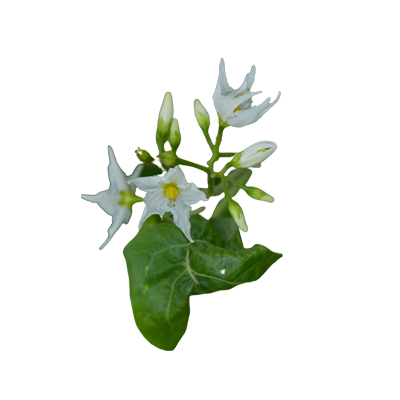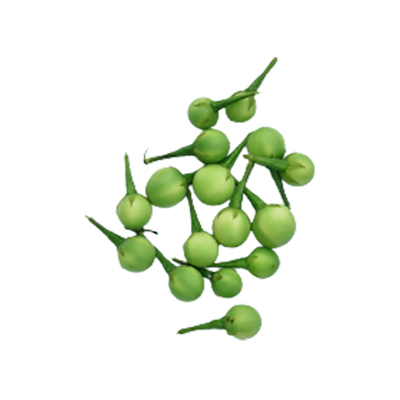Pea Aubergine
Solanum torvum Sw.
Solanaceae
Location in our garden
Principal
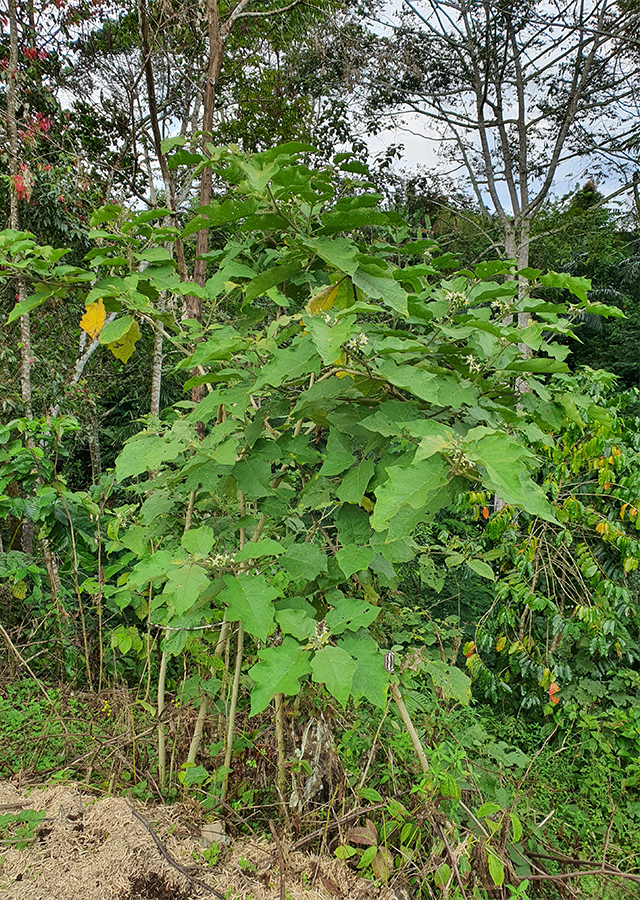
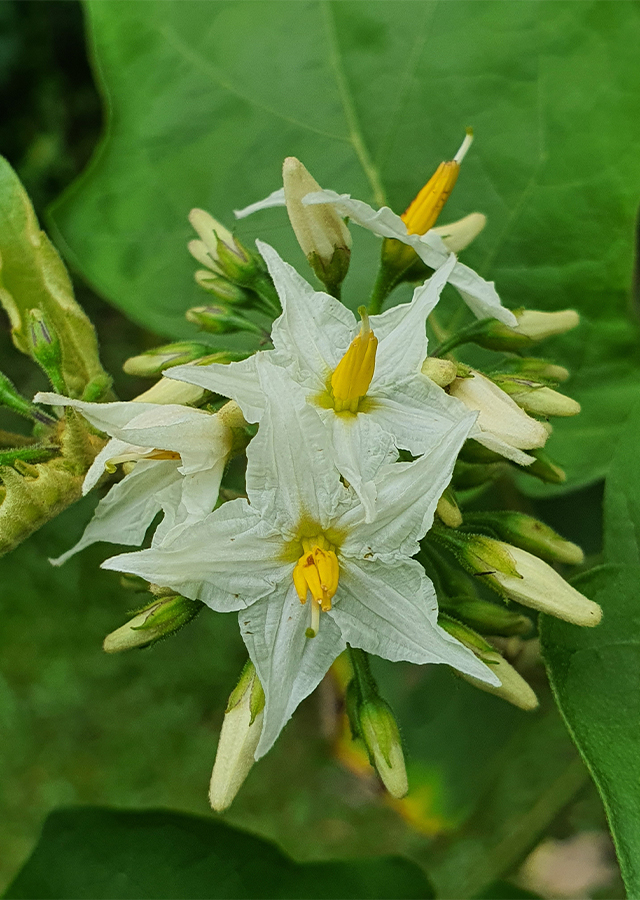
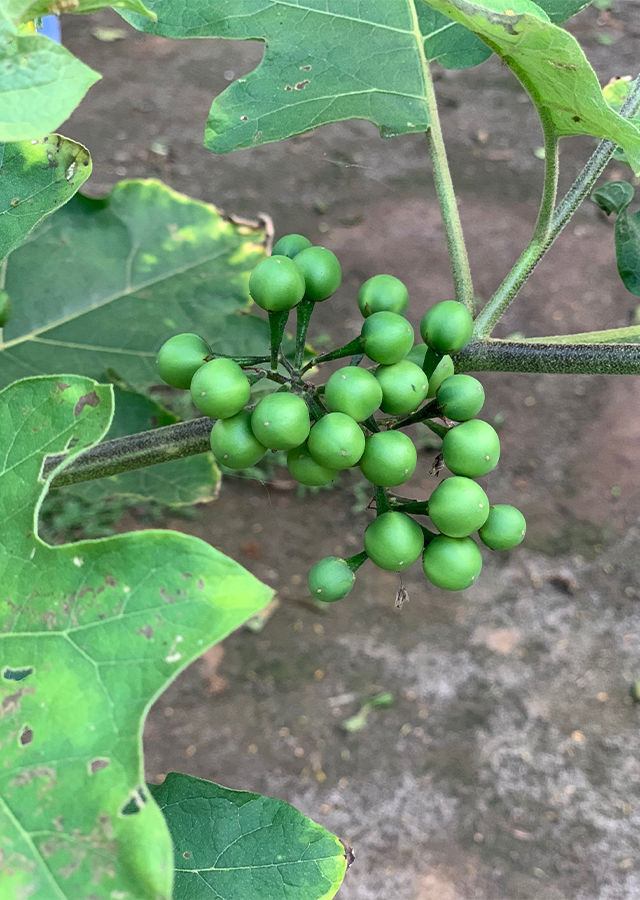
Synonym
Solanum acanthifolium Dunal
Solanum amoenum Jungh.
Solanum campechiense Dunal
Habitus
Shrubs. An evergreen, sparingly-armed, spreading or scrambling, a slender shrub growing from 1 to 4 m tall.
Part Used
Leaves
Flowers
Fruit
Roots
Growing Requirements
Full Sunshine
Need Shade
Drought Resistant
Habitat
Roadside
Shrublands
Grassland
Terrestrial
Overview
Pea aubergine (Solanum torvum) is indigenous to Central and South America, where it is found from Mexico to Brazil and Peru and is widespread in the Caribbean. It is now a common pantropical weed but cultivated as a small-scale vegetable in southern and eastern Asia and is especially popular in Thailand and Indonesia. Commonly known as 'takokak' in Indonesia, its young fruits are eaten as 'lalab' both raw or cooked, and an ingredient in 'sayor lodeh'.
Vernacular Names
Takokak (Indonesia), Jurubeba (Brazilian), Dian qie zi (Chinese), Aubergine sauvage Épineuse (French), Teufels-Nachtschatten (German), Bhi tita (India), Makhua-phuang (Thailand), Tandang-aso (Tagalog-Philippines, Suzume nasubi (Japanese).
Agroecology
A plant of the moist tropics, where it is found at elevations up to 1,600 m. It grows best in areas where annual daytime temperatures are within the range of 17 to 29 °C, tolerates 12 to 35 °C, annual rainfall in the range of 1,000 to 2,000 mm, but tolerates 700 to 4,200 mm. Succeeds in full sun and in light shade. It prefers a pH in the range of 5 to 6, tolerating 4.3 to 6.8.
Morphology
- Roots - erect, branched, slender perennial shrub sparingly armed.
- Stem - densely tomentose with stout, recurved, reddish, or pale yellow prickles.
- Leaves - alternate, solitary or in pairs, petiole 2–4 cm, leaf blade ovate to elliptic, 6–19 by × 4–13 cm, densely tomentose, armed or unarmed, with an acute tip and rounded to oblique base, margin sinuate or usually 5-7- lobed.
- Flowers - Inflorescences extra-axillary, many-flowered racemose panicles. Flowers andromonoecious, pentamerous, pedicel, slender, corolla white stamens five and yellow.
- Fruits - smooth, glabrous, globose berry turning green to yellowish-green when mature, glabrous, 1–1.5 cm in diameter and borne on 1–2 cm, pedicel thickened upwards.
- Seeds - a many-seeded, discoid, brown, 1.5–2 mm in diameter.
Cultivation
- By seed - seed is sown in a nursery and seedlings are transplanted after 5-6 weeks at a spacing of 1 m.
- By semi-hardwood cuttings, 12-15 cm long, collected from fresh shoots and with their leaves removed, will produce roots and new shoots in 3-4 weeks.
Chemical Constituents
Alkaloids, flavonoids, saponins, steroids, tannins, terpenoids, phenolic compounds, and spirostanol glycosides.
Traditional Medicinal Uses
- Leaves are an effective antimicrobial and diuretic, powder as a medicine for diabetic patients, applied topically to treat cuts, wounds, and skin diseases.
- Fruits are diuretic, treatment of malaria, stomach aches, and problems with the spleen, as a treatment for coughs. tonic, analgesic, hematopoietic, sedative, digestive, and antimicrobial. The young fruits are used to improve eyesight.
- The juice of the plant is used to treat fevers, coughs, asthma, chest ailments, sore throats, rheumatism, dropsy, stomach aches, and gonorrhea.
- The juice of the flowers with salt added is used as eye drops.
- The fruit juice is applied locally to ease the irritation of ant bites.
- A decoction of the root is used to treat venereal disease, are boiled, lime juice is added, as a treatment for malaria, a decayed tooth to relieve toothache.
- The juice of the roots is used to treat vomiting caused by weakness.
Part Used
Reference Sources
- CABI. (2014). Invasive Species Compendium: Solanum torvum (turkey berry). Centre for Agriculture and Bioscience International (CABI) Web. https://www.cabi.org/isc/datasheet/50559 (Accessed 01-12-2021).
- Fern, K. (2021). Useful Tropical Plants: Solanum torvum. Useful Tropical Plants Database Web. http://tropical.theferns.info/viewtropical.php?id=Solanum+torvum (Accessed 01-12-2021).
- Plants of the World Online. (2021). Solanum torvum. Kew Royal Botanic Gardens. https://powo.science.kew.org/taxon/urn:lsid:ipni.org:names:821287-1 (Accessed 01-12-2021).
- StuartXchange. (2021). Philippine Medicinal Plants: Tandang-aso. StuartXchange Web. http://www.stuartxchange.com/TandangAso.html (Accessed 01-12-2021).
